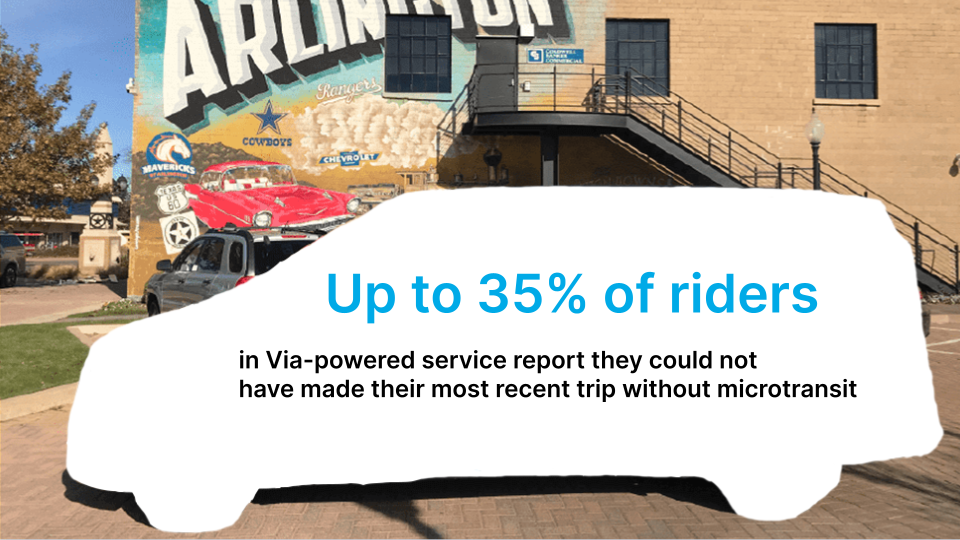We’ve all seen the statistics: inadequate transit hampers socioeconomic mobility , damages health outcomes , impedes educational access, and increases overall social isolation . At Via, we’re passionate about helping communities plan and manage comprehensive transit networks that get more people moving more efficiently.
Microtransit is just a piece of that puzzle — but a powerful one. Using data from rider surveys all over the world, and modeling of transit availability across the cities we serve, our data science team estimates that Via moves tens of thousands of riders — on a weekly basis — who otherwise would not be able to travel. In some services, upwards of 30% of riders report that they would not have been able to make their latest trip without Via. That’s a lot of commutes, doctors’ visits, grocery runs, trips to schools, movie nights, family visits … in short, a lot of living that these riders would have missed.
In this series, we’ll explore four commonalities among these riders in greater depth: income level, access to a private car, disability status, and education access. To begin, hear how our riders described the necessity of transit in their own words:
“The Skipper creates accesses I wouldn’t otherwise have. It is an amazing service and part of what drew me to the city.”
— Salem Skipper rider
“I get to medical appointments that I wouldn’t have gotten to otherwise.”
— Via Metro STL rider
“I wouldn’t be able to go grocery shopping nearly as often or get as much without the Flex shuttle.”
— SMART Flex Detroit rider

Via Resource Editor



%206.png?width=71&height=47&name=The%20Buzz%20Blog%20Hero%20(1750%20x%201200%20px)%206.png)
